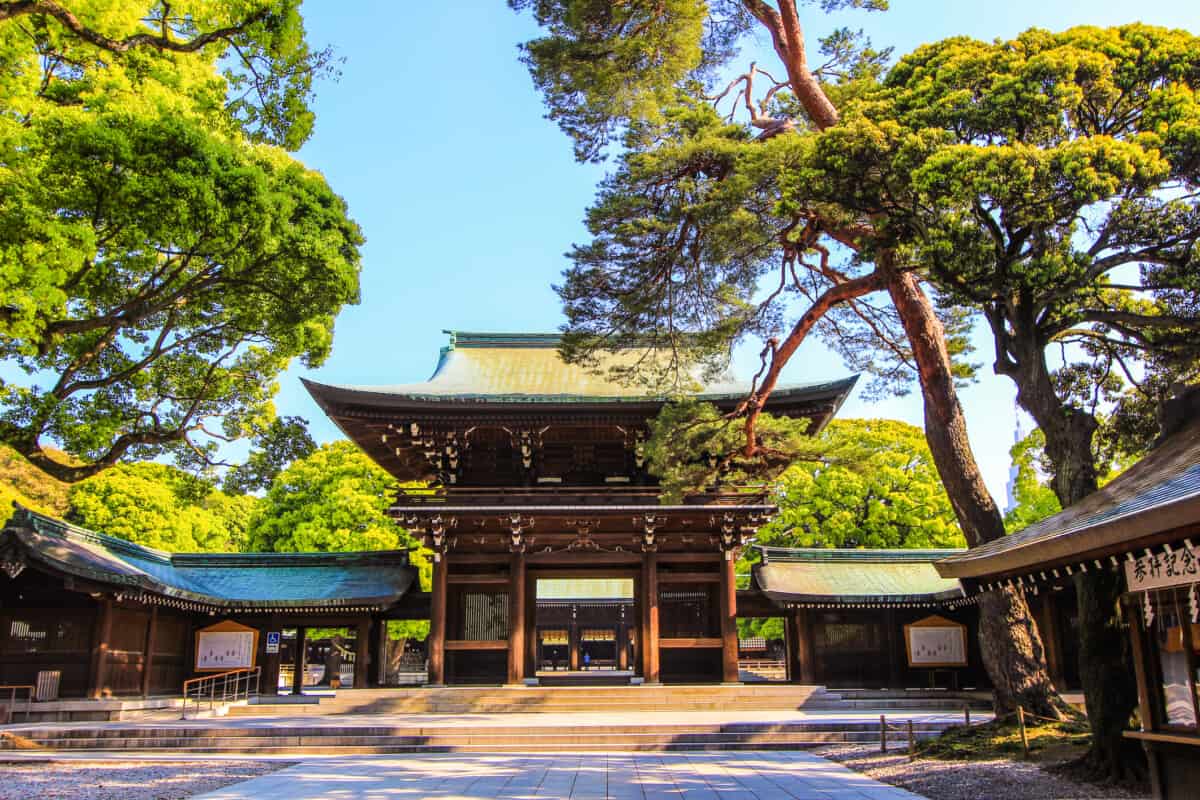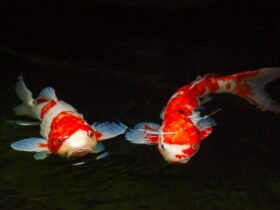A popular place for weddings, Meiji Shrine is a dedication to the emperor Meiji under whose rule the country became a modern state.
When looking for a cultural day out in Japan many people will often turn to temples and shrines as a way to absorb as much culture and history of the location as possible.
The Meiji shrine is no exception to this and it is still very popular in the modern day with many weddings being held there.
Meiji Shrine is a shrine devoted to Emperor Meiji and Empress Shoken. Currently, there are no known documents stating that the emperor is considered kami or god. During World War II, the temple was destroyed, but it was rebuilt (1958) after the war ended. Emperor Meiji was Japan’s first modern emperor.
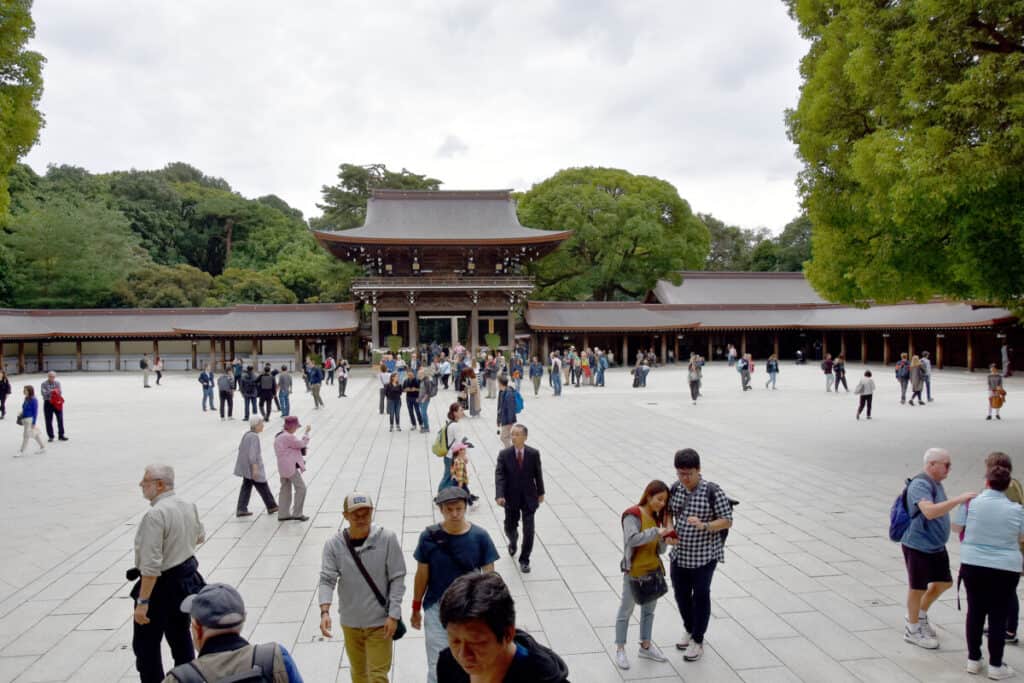
One of the best things to do before visiting a shrine is to learn a little bit more about the history, why it was built, and how this will give you a much deeper appreciation for the structure and grounds when you visit.
Knowing this will also help you to be respectful of any customs and traditions at the shrine.
Here we’ll detail the history, its build, and use of the Meiji Shrine so that you can get a better understanding of the reason for this shrine.
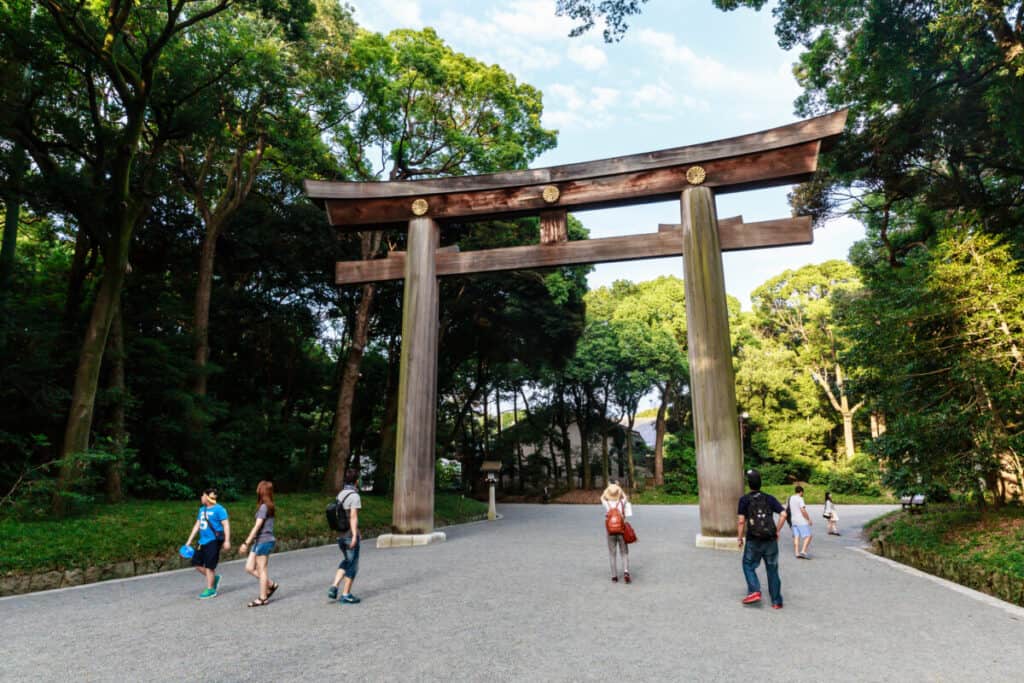
We will also outline the major festivals and celebrations that are held at the Meiji Shrine to help you understand how the shrine is perceived and used in modern-day Japan.
The history of the Meiji Shrine
The Meiji Shrine was constructed in the years 1915-1920 and was built to honor the spirit of Emperor Meiji, who died in 1912, and Empress Shoken. However, despite being constructed in his honor the shrine is not the location of his grave which is found just south of Kyoto.
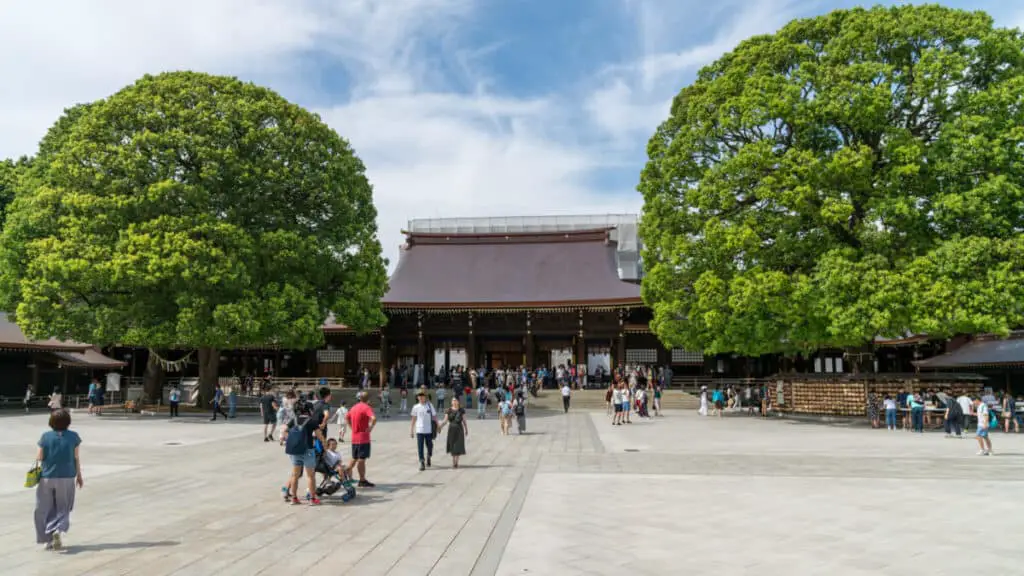
Emperor Meiji was only 15 years of age when he ascended to the throne in the year 1867. Japan had just come to the end of the violent rule of the Tokugawa which spanned more than 260 years. The Meiji period marked a turning point for Japan and began to industrialize, urbanize and even expand Japan.
This was all due to Emperor Meiji’s plan to catch up to the West which at this point had modernized itself ahead of Japan.
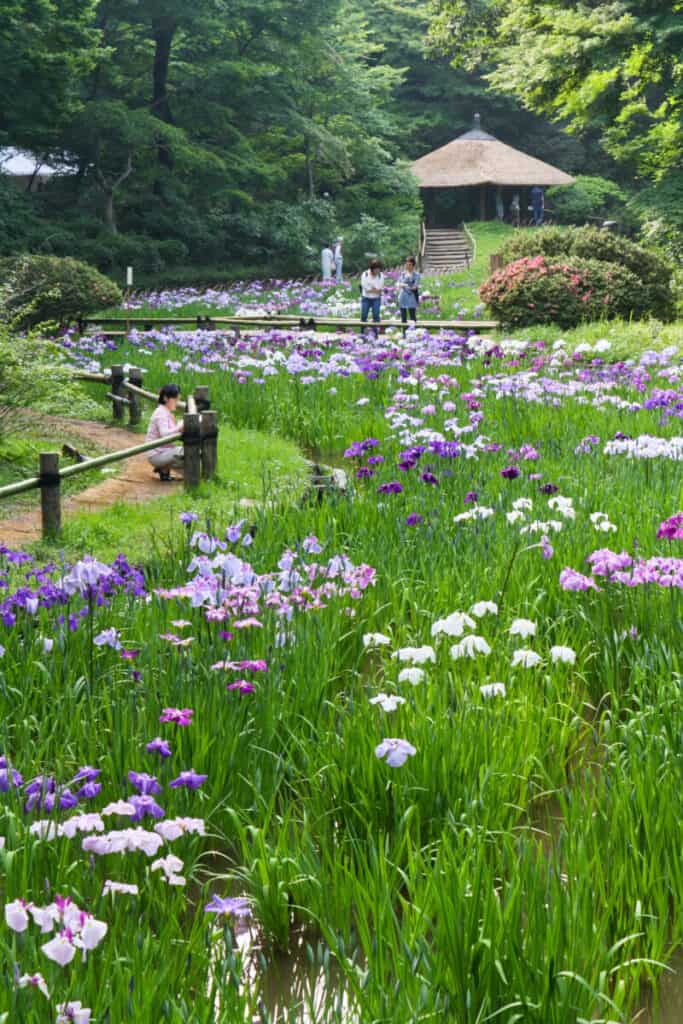
The building stands in the iris garden of Tokyo which was known to be a spot that the emperor and his wife frequently visited. The building was started in 1915 but was not fully completed until 1921.
The shrine itself was dedicated formally to the deceased emperor on the 3rd of November 1920 despite still not being finished. The grounds themselves took a lot longer to complete with the building finished in 1926.
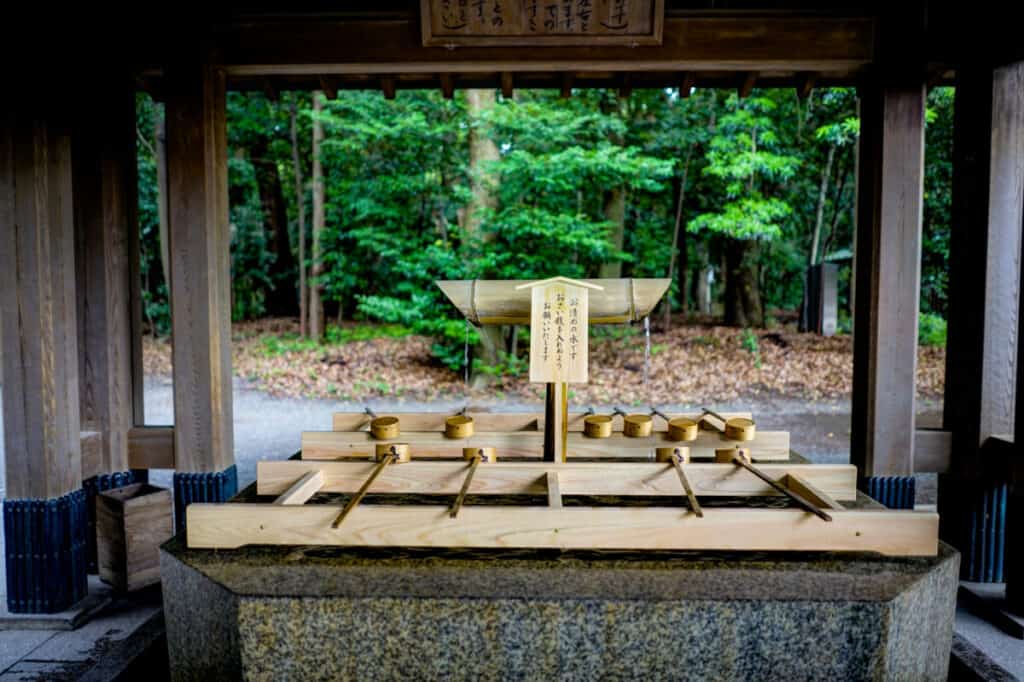
Unfortunately, the air raids on Tokyo in the second world war destroyed the original building but it was rebuilt thanks to a public fundraising effort and the second version was finished in 1958.
It is a tradition in Japan to visit a shrine on new year’s eve in order to prepare for worship, also known as Hatsumode. The Meiji Shrine is the most popular location for this in all of Japan and as such you will see very large crowds of people around the Shrine coming from all over Japan for this particular ritual.
The construction of the Meiji Shrine
The original construction of the Meiji Shrine involved a lot of donated labor and funding and employed the skills of youth groups and similar associations.
These donations, including the building materials, helped to keep the cost down of the project as well as helped to incorporate materials from all over Japan, representing unity in the building itself.
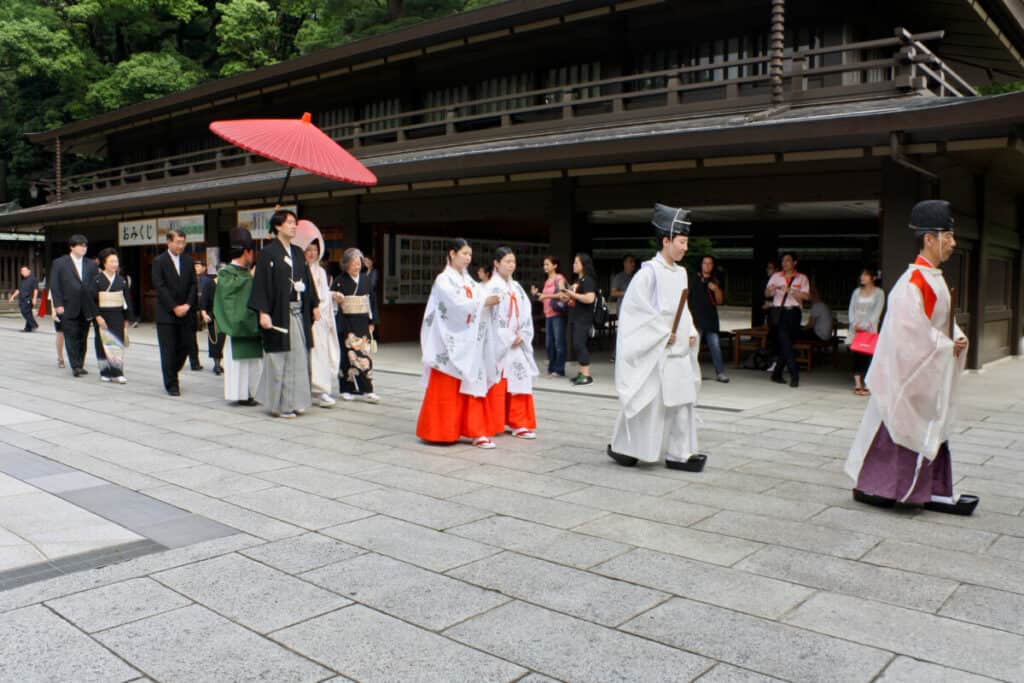
For the main building materials, they were kept local to Japan with the main wood used being Japanese cypress. The main bulk of the wood was imported from Kiso in Nagano and Taiwan (which was under Japanese rule at that time).
However, every Japanese prefecture was utilized for its building materials, including copper.
The original cost of the shrine was ¥5,219,00 at the time, making it an estimated $26 million (USD) in today’s money. The donations of labor and materials meant that the build was only a quarter of the cost.
The Shrine complex
The Meiji Shrine sits in a forest that spans 170 acres and is abundant in trees with over 120,000 trees of 365 varieties. This evergreen and deciduous forest were also donated as the trees were sent to the location during the building process.
The calming nature of the grounds means that many Tokyo citizens and tourists think of it as a spot of rest and relaxation.
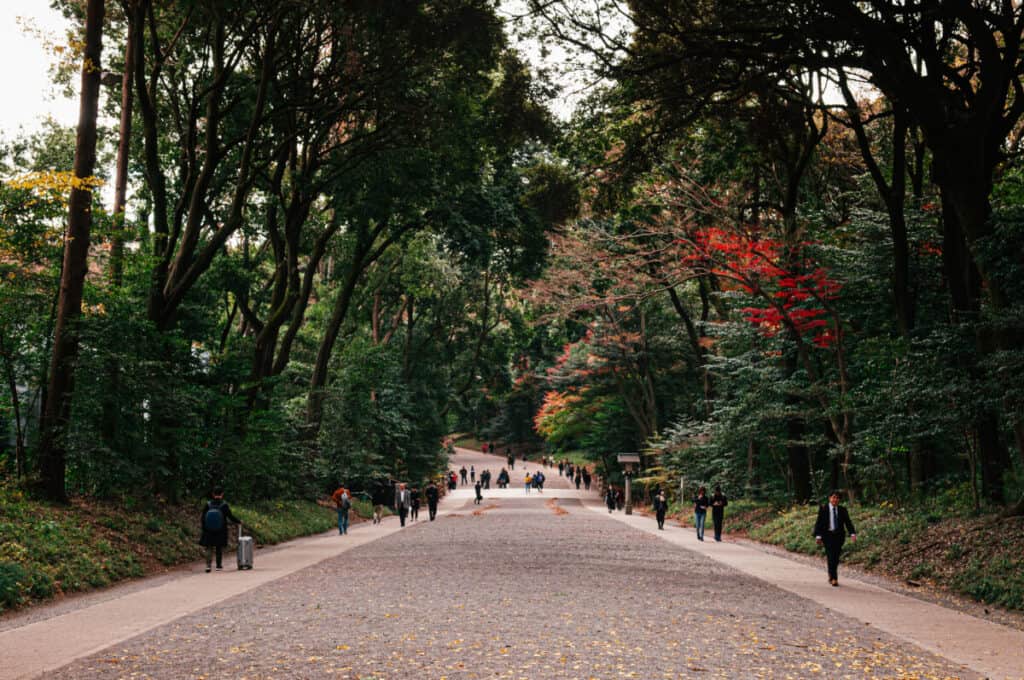
The shrine can be entered by crossing over the Jingu Bashi bridge and is found next to Yoyogi Park. You are able to access the shrine from sunrise until sunset.
The shrine is made up of two main parts: the Naien and the Gaien. The Naien is the inner part that consists of the shrine buildings and a museum of the Emperor’s treasures.
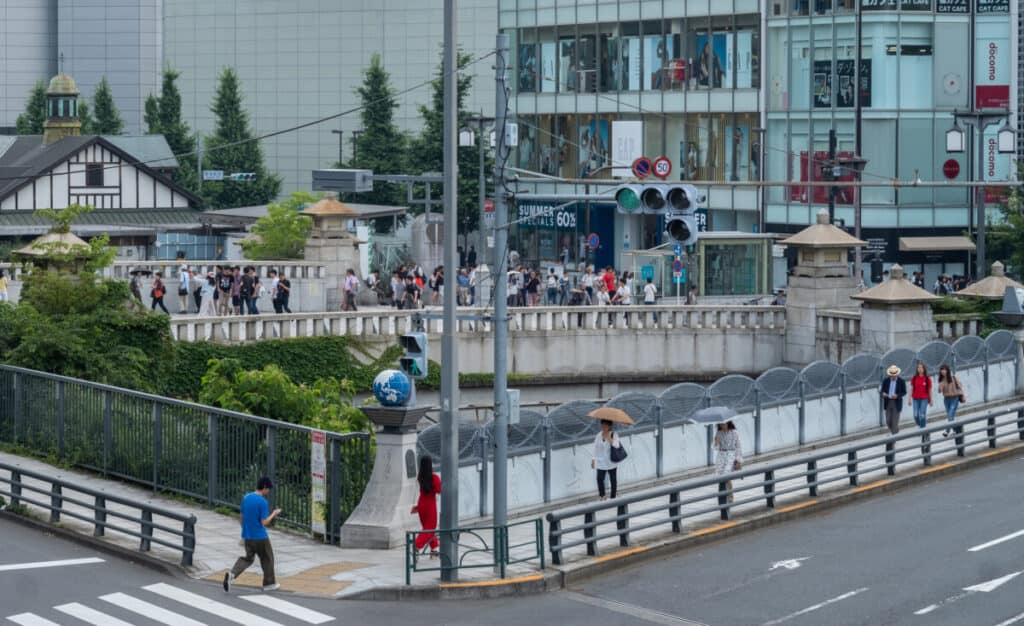
The Gaien is the outer part of the shrine and it is home to the gallery of more than 80 pictures depicting the lives of the couple. In addition, there are also a number of different sports facilities (including national stadiums) and the Meiji Memorial Hall.
This hall was originally used to hold government meetings and other important state events, but today it is used to facilitate weddings, meetings, and food catering.
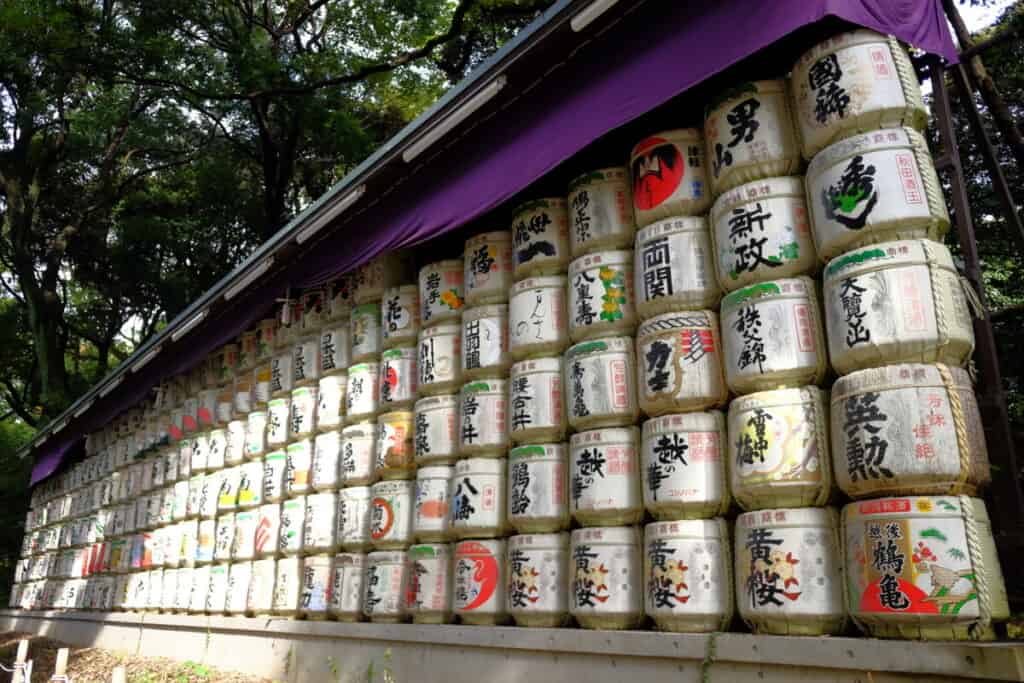
Festivals
There are a number of different festivals that are held at the Meiji Shrine every year. There is a celebration to suit everyone and the grand and relaxing atmosphere of the shrine and its grounds makes for the perfect location. There are also a number of exhibitions held on the grounds and these include:
- Ice carving
- Bonsai
- Calligraphy
- Flower arrangements
- Memory dolls
The autumn grand festival is one of the main celebrations traditionally held at the shrine and runs according to the following schedule:
- 31st October – Main shrine building – Bugaku
- 1st November – Anniversary ceremony
- 2nd November – Morning ceremony
- 3rd November – Emperor Meiji’s birthday celebration
There are also a number of other celebrations that are held such as Saitaisai which is the celebration of New Year’s when many people will visit a temple or shrine to bring good fortune for the new year.
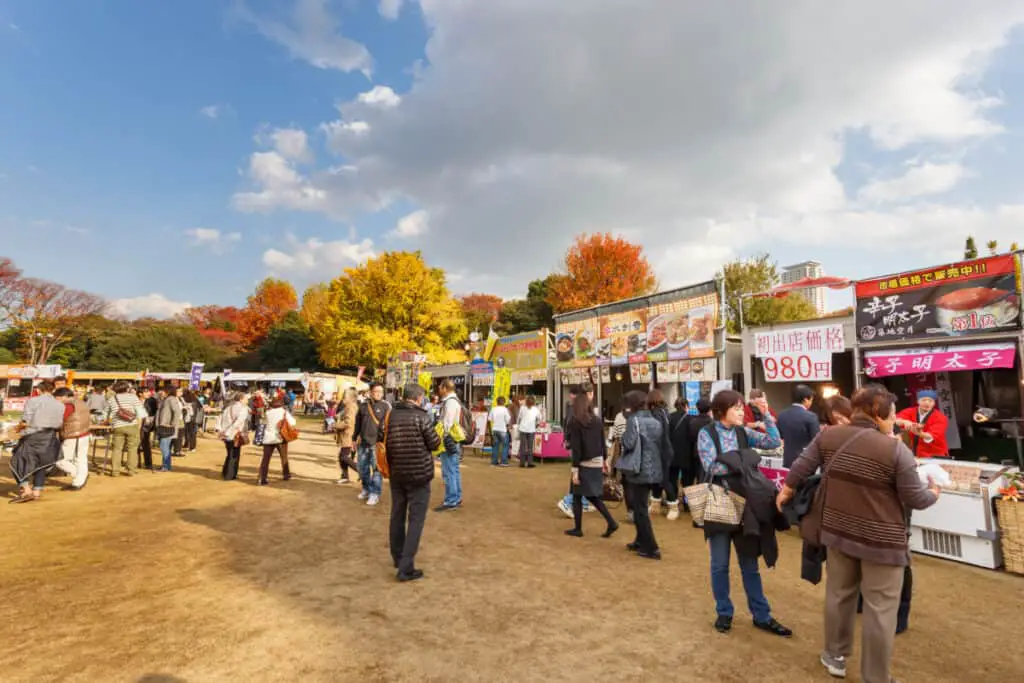
There is Kinensai which is held on the 17th February (of 2021) to pray for fertile lands for agriculture and also Shoken-Kotaigo-Sai which celebrates the life of the Empress.
Summary
The Meiji Shrine is one of the most important buildings in Japan for Shinto, thanks to its rich history and symbolism. Celebrating and honoring the life of Emperor Meiji who took Japan into a more modern era and quashed the violent rule of those before him.
His consort is also honored by the shrine and respects are traditionally paid to both via prayer and on their birthdays.
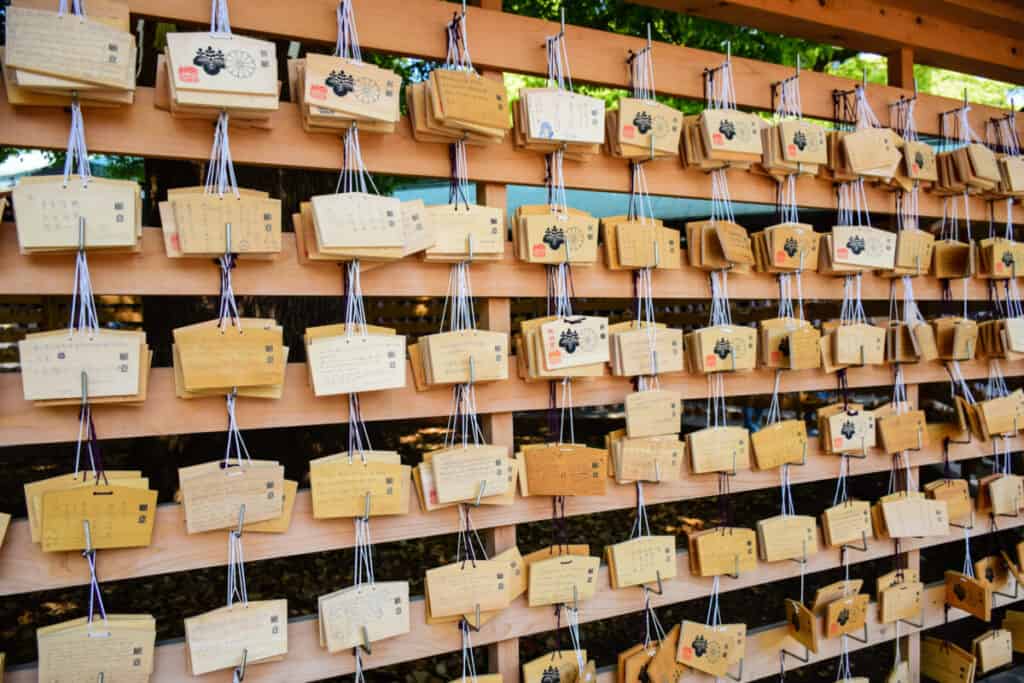
The Meiji Shrine stands in impressive grounds filled with trees donated from all prefectures in Japan, making it truly a sight to behold.
Many people come to the grounds both for relaxation and recreation as the surrounding nature gives the area a very calming atmosphere.
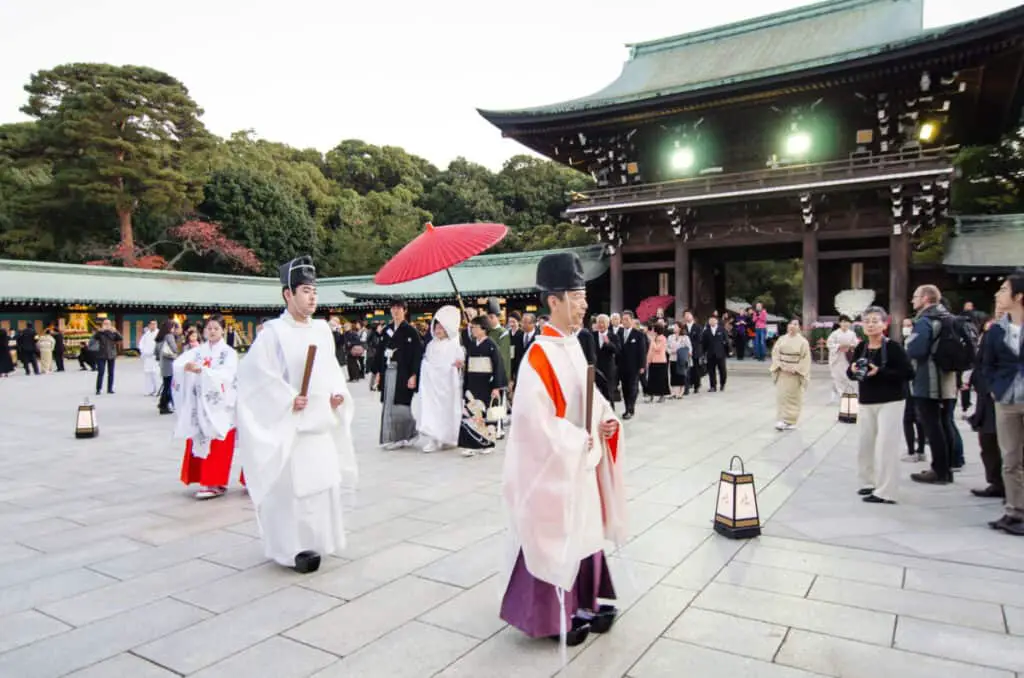
Traditional festivals are held at the Meiji Shrine every year as well as more modern events such as exhibitions and Shinto weddings.
For this reason, you will almost always see the Meiji Shrine bustling with people, both locals and tourists, due to the association of the shrine with so many diverse activities.
Meiji Shrine virtual tour via Youtube

